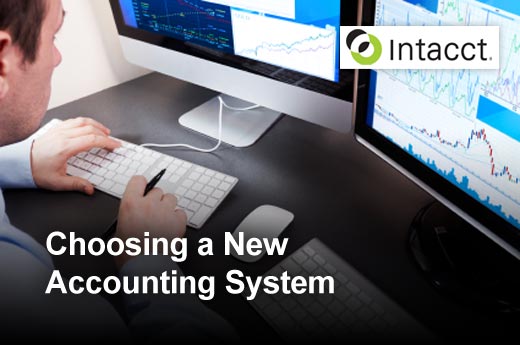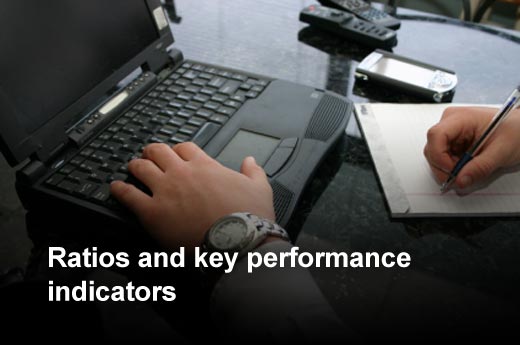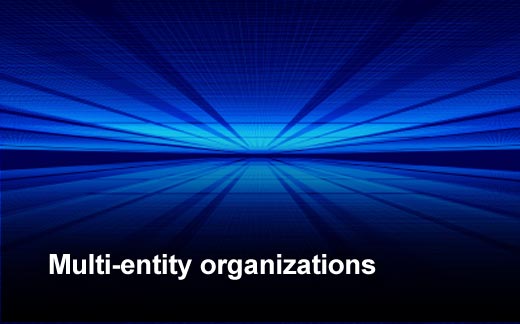A good financial and accounting system, like a powerful engine on a seafaring vessel, should propel your business forward. It should give you the specific insights you need to spot the storms ahead, help you maximize resources with streamlined processes, and be nimble enough to help you navigate the changing currents of today’s business environment. It should turn information into insights and give your employees the access they need to make informed decisions. Despite vendor claims, many accounting systems do just the opposite. They tie you down, restrict your progress, and make you change the way you operate on a daily basis. Rather than offering you ‘smooth sailing’ as you steer your business forward, these ineffective software packages act like anchors that keep your business stuck. Accounting software is a strategic investment, and you should not settle for less than exactly what you need to reach your business goals. Before you embark on a search for the right solution, you need to make sure you have the facts straight about what to look for, and more importantly, what to look out for.
Sailors learn not only what to do in an emergency, but also how to identify potential trouble — and what flag to raise when they see it coming. In this slideshow, Intacct, a provider of cloud-based accounting software, offers tips on how to avoid making the wrong system decision by separating the characteristics that matter from those that could run your business aground. You’ll learn how to compare fair-weather solutions to systems that are designed to weather rough regulatory seas, facilitate international business, and provide clear navigational guidance. The goal is to help you find a system that provides a solid foundation to help your business steam ahead—rather than just stay afloat. By taking the time to carefully select the right solution, you can confidently set sail on a grand business adventure.
Click through for eight rules for investing in a new accounting system, provided by Intacct, a cloud-based accounting software provider.
When it comes to accounting software, it is the underpinnings of the system that ultimately determine its effectiveness. Proper system design makes the difference between merely operating from an ocean of data to propelling your business forward with clear reports and meaningful analytics. Start by taking a good look at the ledgers behind any system you consider.
Many businesses start out using a simple single-ledger system like QuickBooks. A single ledger system stores all of your business information in one place, which is simple and appropriate for small companies. Effective systems, designed for the demands of more advanced businesses use a series of inter-connected ledgers. These multi-ledger systems are optimized for reporting and analysis. Accounts receivable information, for example, is maintained in one place—with detailed transactions for customer data, customer credit limits, and payment terms all stored together in that individual ledger. Only summary financial data is stored in the general ledger, which maintains connections back to the source ledger.
Reporting can be handled from the general or subsidiary ledgers without limitation, and the entire system is optimized for maximum efficiency, performance and scalability. Multiple ledgers are the key to faster closing processes, strong audit and control environments, rich planning, and reporting opportunities and provide the basis for a solution that can grow with your business.
A business owner can’t navigate without good information — which starts with the data captured in your chart of accounts. The chart forms the structure that enables you to compare results year after year and budget by budget. Accounting systems that offer only segmented account numbers or free-form accounts simply can’t capture information in enough detail to support sophisticated reporting. A powerful system should offer multiple ways to segment information so you can extract the insights you need.
- User-defined dimensions give you the ability to associate relevant business data with any type of transaction. Multiple dimensions are the key to rich planning, reporting, and analysis.
- User-defined charts of accounts and account groups deliver superior flexibility so you can define account structures for your unique business and industry requirements.
- User-defined statistical accounts enable you to incorporate operational data into your budgeting, financial reporting and managerial metrics including custom KPIs and ratios.
Captains of industry rely on timely and accurate insight into their business. They need to track data at a fine level of detail without cluttering the chart of accounts and slowing reporting. At a minimum, they need to stay on top of cash flow, operating profit, and top-line revenue growth just to keep their business afloat.
Few business owners have a compass to guide them safely. They need clear insight, which requires full access to underlying data. They might want to create key performance indicators (KPIs) or group non-consecutive account numbers to form a special report. They might need to create financial or operational ratios. To do these things, they need a system flexible enough to support their unique needs, one that transforms data into operational insights by:
- Combining statistical and financial information to create ratios and KPIs.
- Creating rollups and groups of accounts throughout the system, ensuring that everyone has the same insight into key metrics.
- Creating budgets, plans and forecasts for both financial and operating metrics and comparing them with actual results.
Businesses must adhere to a set of U.S. and international accounting standards that dictate how to compile and report information. Failure to properly apply or monitor these rules can make it difficult to qualify for loans and manage a business, and can even lead to employee fraud. Most U.S. businesses follow generally accepted accounting principles (GAAP), which are designed to ensure information is comparable across numerous industries. Bankers look to GAAP rules to ensure consistency, and accountants are bound to apply them when performing compilations, reviews, and audits. Regardless of the legal implications of failing to record transactions properly, it’s difficult to run a business and make good decisions when information is not accurately recorded. But today’s businesses are subject to other standards that must be applied as well — tax compliance, international standards, even managerial disciplines. How can a business expect to manage across these diverse reporting requirements? The key is to look for a multi-book design.
In a multi-book system, transactions can be posted to the tax book without impacting GAAP financials. Cash- and accrual-based transactions can be managed simultaneously, but in separate books. Multi-national firms can track the business in both GAAP and IFRS simultaneously. Even cross-currency reporting is a snap. With a multi-book system, businesses can keep all consumers of their financial statement information happy.
Employees are vital to keeping a business moving forward. Businesses need to provide employees with the access and insights they need to do their job, while also providing strong internal controls. It can be a delicate balancing act unless you have a system that supports segregation of duties through granular user rights. The accounts payable clerk should be able to perform limited tasks like entering and reviewing invoices, while others in the organization have full access to bill payments, transaction edits, and the like. But everyone should be able to access your application securely whenever they need it.
Complications can arise when a company becomes a multi-entity organization. Owners and managers need visibility across entities. They don’t want to force each entity to use the same cookie-cutter accounting structures, but they need to share common information and transact business with each other. Today’s complex entities need a system that supports multiple entities and their unique ownership structures — including partial ownership and holding companies.
In larger organizations, each entity needs to operate independently, while staying connected to the others. Individual units should be able to use their own account structures that can then be consolidated for global reporting. Customer and vendor data should be sharable, allowing customer agings that span multiple business units.
A powerful, multi-entity system must support businesses operating with different charts of accounts, different calendars, and different accounting regimes. It should provide on-demand and auditable financial consolidation across all of your business entities.
Businesses face new challenges once they cross into international territories. They must operate in multiple currencies and report according to different accounting standards. They need to account for exchange gains and losses and may provide reporting in multiple languages.
Business owners need to prepare for the challenges of running a global business. They need accounting software that can support their unique requirements with:
- Features that work together to create a scalable multi-national system for global business management.
- Concurrent support for multiple currencies and accounting regimes.
- Creation and management of data and documents in all major languages.
- Real-time financial visibility into global, local, and consolidated reports and KPIs.
- Anytime access from anywhere with an Internet connection.
Business owners and employees need information at their fingertips. Individual department managers must work on their own goals without losing sight of overall company objectives. They need clean period cutoff in individual ledgers (like AP and AR) and the ability to quickly begin work in a new accounting period. Employees need to stay informed about their progress towards incentive goals and bonuses. Financial managers need to identify dangerous trends immediately. Today’s businesses need information that is accessible and readily available in the form of inquiries as well as customizable reports and dashboards.











